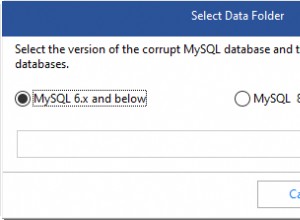Hay dos opciones:
- Usar un
MERGEdeclaración en lugar deINSERT ... ON CONFLICT. - Utilice una
UPDATEdeclaración conJOIN, seguido de unINSERTcondicional .
La documentación de T-SQL para MERGE dice:
Sugerencia de rendimiento:el comportamiento condicional descrito para la declaración MERGE funciona mejor cuando las dos tablas tienen una combinación compleja de características coincidentes. Por ejemplo, insertar una fila si no existe o actualizar una fila si coincide. Cuando simplemente actualice una tabla en función de las filas de otra tabla, mejore el rendimiento y la escalabilidad con instrucciones básicas INSERT, UPDATE y DELETE.
En muchos casos, es más rápido y menos complicado simplemente usar el UPDATE separado y INSERT declaraciones.
engine = sa.create_engine(
connection_uri, fast_executemany=True, isolation_level="SERIALIZABLE"
)
with engine.begin() as conn:
# step 0.0 - create test environment
conn.execute(sa.text("DROP TABLE IF EXISTS main_table"))
conn.execute(
sa.text(
"CREATE TABLE main_table (id int primary key, txt varchar(50))"
)
)
conn.execute(
sa.text(
"INSERT INTO main_table (id, txt) VALUES (1, 'row 1 old text')"
)
)
# step 0.1 - create DataFrame to UPSERT
df = pd.DataFrame(
[(2, "new row 2 text"), (1, "row 1 new text")], columns=["id", "txt"]
)
# step 1 - upload DataFrame to temporary table
df.to_sql("#temp_table", conn, index=False, if_exists="replace")
# step 2 - merge temp_table into main_table
conn.execute(
sa.text("""\
UPDATE main SET main.txt = temp.txt
FROM main_table main INNER JOIN #temp_table temp
ON main.id = temp.id
"""
)
)
conn.execute(
sa.text("""\
INSERT INTO main_table (id, txt)
SELECT id, txt FROM #temp_table
WHERE id NOT IN (SELECT id FROM main_table)
"""
)
)
# step 3 - confirm results
result = conn.execute(sa.text("SELECT * FROM main_table ORDER BY id")).fetchall()
print(result) # [(1, 'row 1 new text'), (2, 'new row 2 text')]




